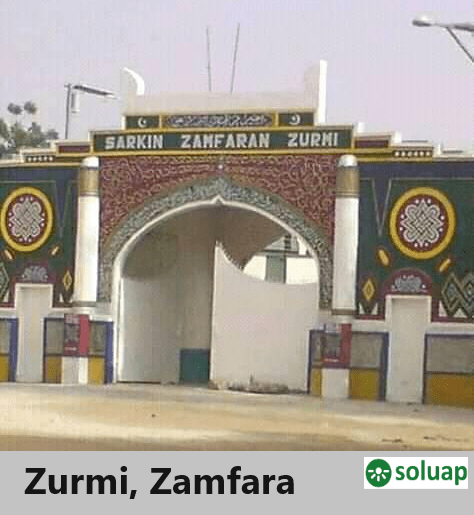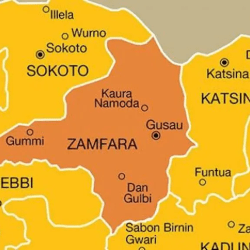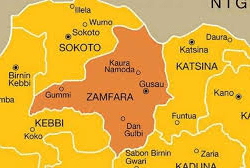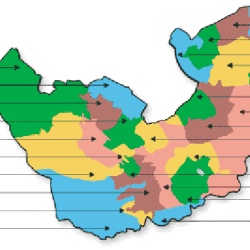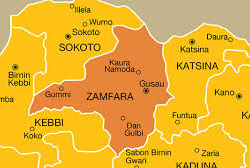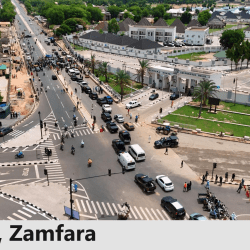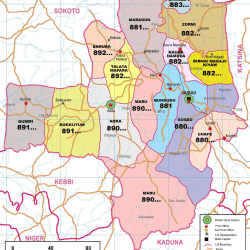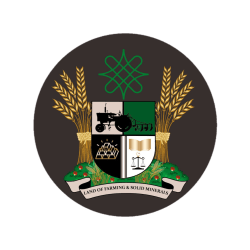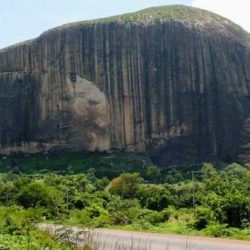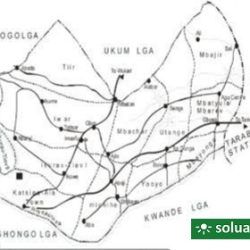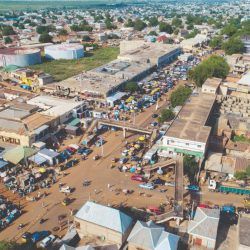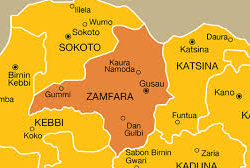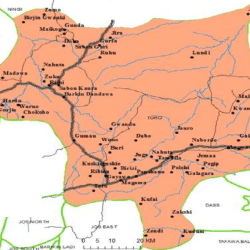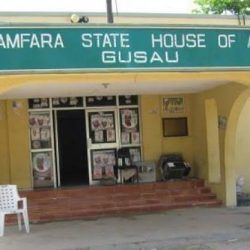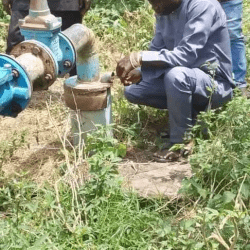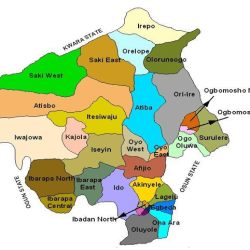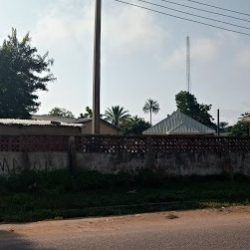Zurmi is a Local Government Area (LGA) in Zamfara State, Nigeria. Prominent places in the LGA are: Gurbin Bore, Kwashabawa, Birane, Mayasa, Tungar Fulani, Mashema, and Tubali. The most populated is Gurbin Bore.
Capital
The capital is Zurmi town located at 12°46′00″N 6°47′10″E.
Land area
The LGA has an area of 2,834 km2 and a population of 293,837 at the 2006 census.
Border
Zurmi shares border with Niger republic from the North and Katsina state from East.
The people of Zurmi are Fulani, Alibawa by tribes that migrated originally from Mali in the 16th Century; they came to Nigeria from Niger, through Katsina in a village called Runka in present day Katsina State. After settling down in Runka they were expelled by the Sarkin Katsina for fear of domination. They now left Katsina and moves towards ziyara, which was the leader of the empire under the leadersip of Sarkin Gobir Bawa Jan Gwarzo in 16th century, they visited Bawa Jan Gwarzo and paid him homage, and gave him gifts such as cows and sheeps, and also requested for his permission to settle in part of his area which is in present Zamfara. The permission was granted. They were also given a sword as evidence of conformant of leadership of that area to them. Their settlement after leaving Katsina was a village called Tsakauna in present Birane district. Their leader was called Isah. After settling down in Tsakauna, Isah died and was buried in Tsakauna in the early 17th century. After the death of Isah, his brother Yabo left Tsakauna to establish his own kingdom in Yabo, i.e., in the present Sokoto State while some move to Bungudu, some few kilometers to Zamfara State capital Gusau, and the rest that remain in Tsakauna also move to Bunga, a village 3 KM away from the Zurmi town presently. Under the leadership of Abu Hamid in the late 17th century from Bunga, they also migrated to Zurmi, all in the 17th century
From the year 1784 when Abu Hamid was appointed as sarkin zamfara to this present day zurmi town and zurmi emirate council is over 200 years old.
Emirs of Zurmi
The Zurmi Emirate Council has 19 Emirs. They are called Sarkin Zamfara Zurmi. They are as follows.
- ABU HAMID 1784 – 1789 (5 YEARS)
- TARNA 1789 – 1809 (20 YEARS)
- KANAU 1809 – 1825 (16 YEARS)
- MAMUDA 1825 – 1845 (20 YEARS)
- MAINASARA 1845 – 1853 (8 YEARS)
- ALIYU 1853 – 1854 (1 YEAR)
- ABINADAWA 1854 – 1864 (8 YEARS)
- BAWA JAN BABILLACE 1864 – 1878 (16 YEARS)
- UMARU MAMUDA 1878 – 1898 (20 YEARS)
10. ALIYU NA TIRA 1898 – 1906 (8 YEARS)
11. UMARU UME 1906 – 1908 (2 YEARS)
12. SON ALLAH 1908 – 1915 (7 YEARS)
13. ALIYU SAMBO 1915 – 1928 (13 YEARS)
14. JIBIR 1928 – 1935 (7 YEARS)
15. MUHAMMAD 1935 – 1950 (15 YEARS)
16. SULAIMAN 1950 – 1970 (20 YEARS)
17. MOH’D KABIR 1970 – 1976 (6 YEARS)
18. MUHAMMADU MAINASARAWA 1976 – 2002 (26 YEARS)
19. ALH. ABUBAKAR ATIKU MOH’D 15/03/2002 –
Council wards
Zurmi Local Government Area has 11 wards, namely:
- Boko
- Dauran / Birnin-tsaba
- Dole
- Galadima/yanruwa
- Kanwa
- Kuturu/mayasa
- Kwashbawa
- Mashem
- Rukudawa
- Yan Buki/ Dutsi
- Zurmi
Polling units
Zurmi LGA has 35 polling units as follows:
- Maduba / Yar Kasuwa
- Kadamutsa I / M.P.S. Kadamutsa
- Kadamutsa II – M.P.S. Kadamutsa
- Nasarawa I / M.P.S. Nasarawa
- Nasarawa II / M.P.S. Nasarawa
- Gidan Shaho / Garkar Sarkin Noma
- Dada Shiyar Sabon Gari Zawayya Dada
- Sh/Galadima / Yar Yara
- Rimni / Yar Kofar
- Marmaro / Pri. Sch.
- Gidan Gadaje / Garkar Gadaje
- Bakon Gebe / Yar Magasa
- Majemawa I / J.N.I Zurmi
- Majemawa II / J.N.I. Zurmi
- Kofar Kuka / Yar Kofa
- Katanga I / Isau M.P.S. Zurmi
- Katanga II / Bakin Kotu
- Shiyar Gora / Women Centre Zurmi
- Shiyar Mamman / Town Dispensary Zurmi
- Ali Bawa / Shiyar Ali Bawa
- Awala Zumi/ Awala
- Gididi/Garkar Ardo
- Nasarawa III
- Nasarawa IV
- Awala II/G.G.D.S.S Zurmi
- Katanga II
- Katanga IV/Isau M.P.S
- Shiyar Gora II/Women Centre
- Kofar Kuka II/Court Lodge, Zurmi
- Alibawa II
- Majemawa III
- Majemawa IV/Girls’ Focal Pri. Sch Zurmi
- Shiyar Mamman II/Town Dispensary
- Kadamutsa II
- Kadamutsa IV/M.P.S
Climate
The temperature ranges from 59°F to 102°F year-round and is hot, cloudy, and windy during the dry season.
Temperature
The hot season, which runs from March 16 to May 22, lasts for 2 months and with daily highs that average more than 99°F. With average high temperatures of 102°F and low temperatures of 77°F, April is the hottest month of the year in Zurmi. The average daily high temperature during the mild season, which runs from December to January is below 88°F. With an average low of 60°F and high of 87°F, January is the coldest month of the year in Zurmi.
Trees
As of 2000, < 0.1% of Zurmi land cover was >30% tree cover.
From 2000 to 2020, Zurmi gained 11 ha of tree cover region-wide equal to < 0.1% of all tree cover gain in Zamfara.
In 2010, Zurmi had < 1 ha of tree cover, extending over < 0.1% of its land area.
In 2012, it lost 1 ha of tree cover, equivalent to 335 t of CO₂ emissions.
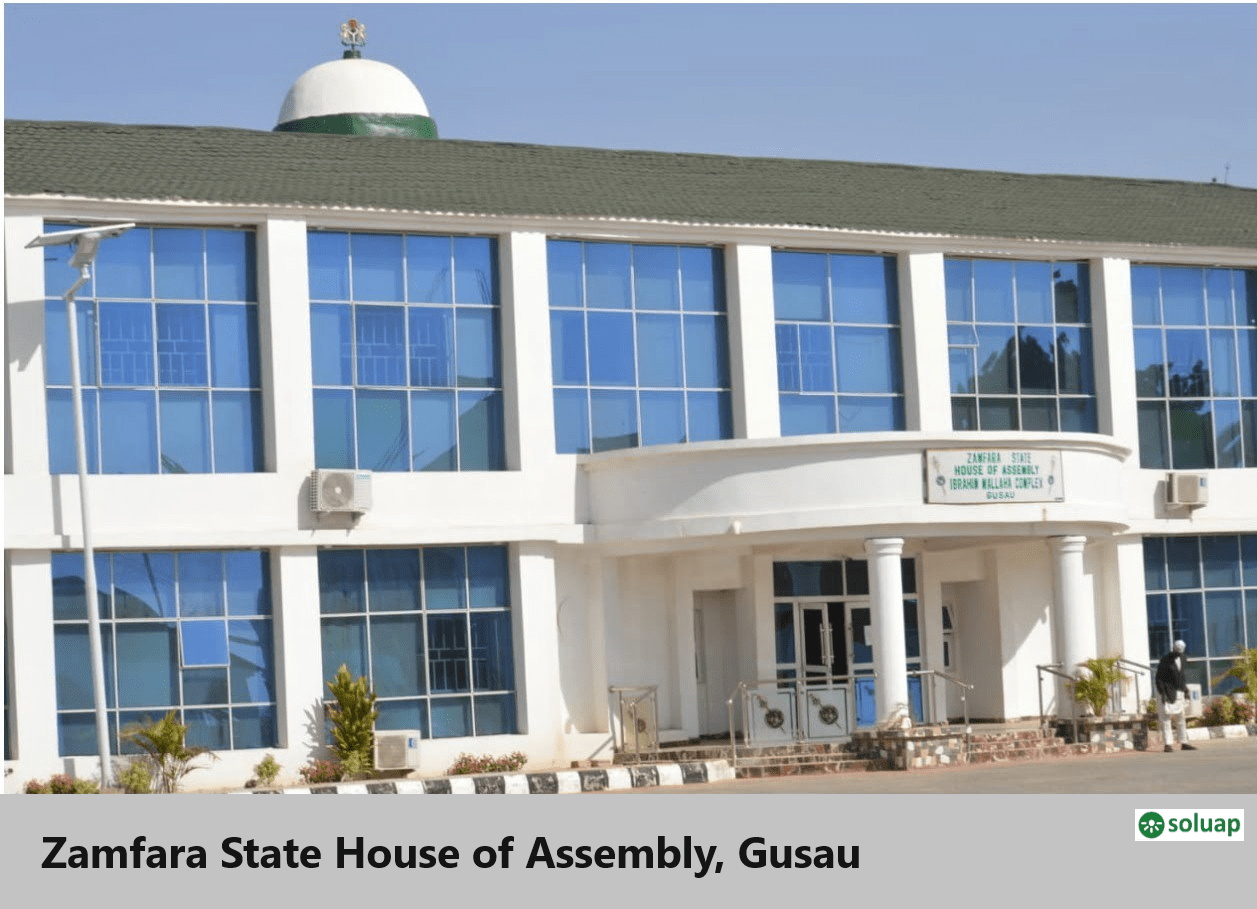
MSF ( Medecins Sans Frontieres [French] Doctors Without Borders [English]) assists Zamfara people with healthcare
People in Zamfara state, Nigeria, have faced unimaginable challenges due to armed conflict. Many of them have had to flee their homes and take shelter in displacement camps.
In Zurmi local government area, over 2000 displaced people now live in a school premises, lacking basic necessities like food and medical care.
Since January, MSF teams have been providing essential health services; medical consultations, screenings, and vaccinations to support those in need.

Dismissed Zamfara Emir Abubakar Atiku is died few year after
Former Emir of Zurmi in Zamfara State, Abubakar Atiku, who was dethroned on April 27, 2021, for allegedly aiding banditry in his emirate has died in Dubai, the United Arab Emirates. Atiku died in a private hospital in Abu Dhabi following a protracted illness.
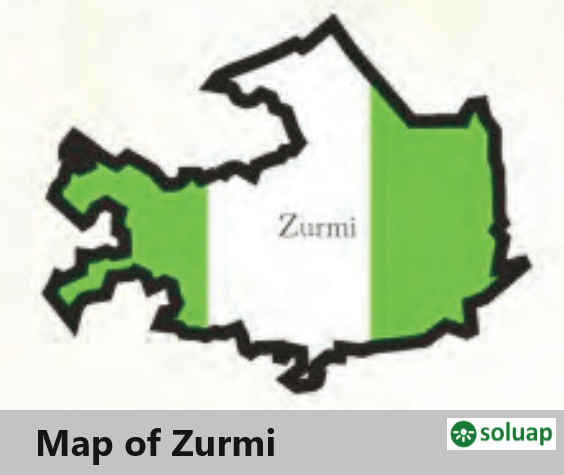
Bandits held people captive
Bello Turji, notorious bandits’ leader, reportedly held five residents of Moriki town in Zurmi Local Government Area of Zamfara State captive. The victims were said to have been held after they delivered N10.5m “Protection Levy” slammed on their community.
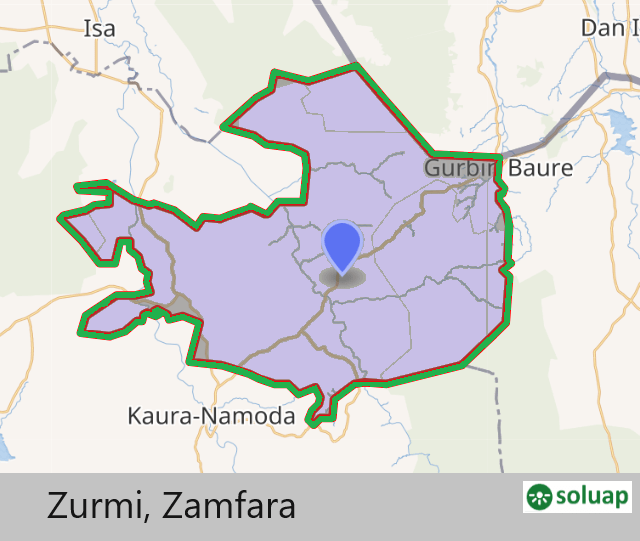
In April 2014 gunmen sack two villages In Zamfara, 26 persons were killed
Two villages in the Zurmi Local Government Area of Zanfara were attacked this afternoon. 26 people were killed in the attacks.
The attacks took place at around 12:00 pm, noon, local time, today in Maitsaba and Birnin-Tsaba villages in the Zurmi local government area. In recalling the incidents, the Chairman of Zurmi local government , Alhaji Abdullahi Mohammed Gurbin-Bore, told newsmen this evening in Gusau, that the Gunmen were seen dressed in Nigerian Military uniforms, and riding about 50 motorcycles. The gunmen encircled the agrarian villages, and began shooting sporadically.
